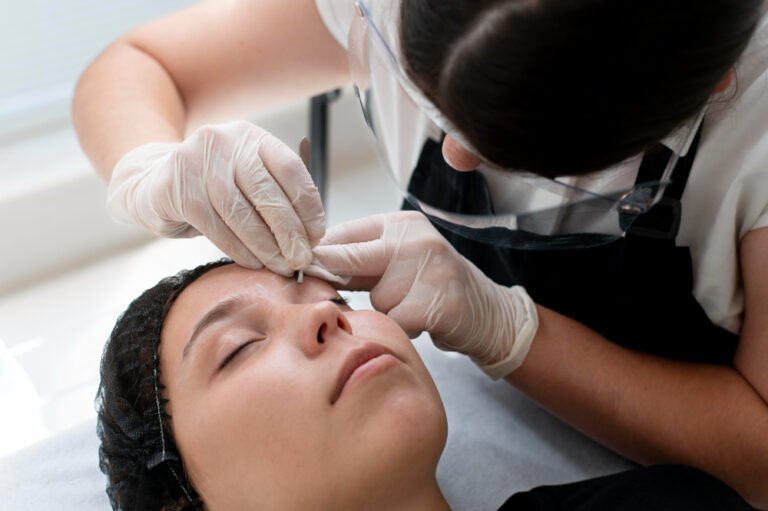Labiaplasty is a popular surgical procedure that reduces or reshapes the labia minora or labia majora. While it can deliver transformative results, not every woman is ready for surgery—or needs it. This leads many to ask:
Are there non-surgical alternatives to labiaplasty? And if so, do they actually work?
In this guide, we explore the non-invasive and minimally invasive treatments that claim to rejuvenate or reshape the vaginal area, evaluate their effectiveness, and explain when surgery might still be the better option.
🔍 Why Women Seek Alternatives to Labiaplasty
Women turn to non-surgical options for various reasons:
- 🩺 Avoiding surgery and general anesthesia
- 🕒 Minimizing recovery time
- 💸 Lower upfront cost
- 😌 Managing mild symptoms or cosmetic concerns
- 💬 Personal preference or fear of surgery
However, the effectiveness of these treatments depends on the severity of the issue and the goals of the patient.
💡 Top Non-Surgical Alternatives to Labiaplasty
1. Laser Vaginal Rejuvenation
Technology: CO₂ or erbium laser (e.g., MonaLisa Touch, FemTouch)
Purpose: Stimulates collagen production and tightens external vaginal tissues.
Pros:
- Non-invasive, quick sessions (10–30 mins)
- No incisions or downtime
- Improves mild laxity or wrinkling
Cons:
- Results are subtle, not dramatic
- Doesn’t reduce labial size
- Temporary effects—requires maintenance sessions
Best For: Women seeking improved skin tone, hydration, or mild tightening rather than major reshaping.
2. Radiofrequency (RF) Energy Treatments
Technology: Devices like ThermiVa or Viveve
Purpose: Gently heats tissues to stimulate collagen and tighten labia and vaginal walls.
Pros:
- Non-invasive and painless
- Can improve mild laxity and dryness
- No downtime
Cons:
- Effects are often modest
- Results may fade after 6–12 months
- Not suitable for significant labial hypertrophy
Best For: Mild sagging, loose skin, or enhanced intimate comfort.
3. Dermal Fillers for Labia Majora Augmentation
Product Used: Hyaluronic acid-based fillers (e.g., Juvederm, Restylane)
Purpose: Add volume to the labia majora for a fuller, more youthful look.
Pros:
- Instant results
- Non-surgical
- Can improve symmetry and reduce a deflated appearance
Cons:
- Doesn’t reduce labial size—only enhances outer lips
- Requires touch-ups every 6–12 months
- Possible bruising, swelling, or nodules
Best For: Women looking to plump or rejuvenate the outer labia rather than reduce inner labial tissue.
4. Platelet-Rich Plasma (PRP) Injections
Technique: PRP derived from your own blood is injected into the vaginal area to stimulate tissue regeneration.
Pros:
- Natural, low risk of rejection
- May improve skin texture, sensitivity, and moisture
Cons:
- Results are inconsistent
- No effect on actual labial size
- Requires multiple sessions
Best For: Enhancing sensation, circulation, or healing, but not reshaping.
5. Topical Creams and Serums
Common Ingredients: Collagen-boosting peptides, hyaluronic acid, herbal extracts
Claims: Smoother texture, firmer skin, increased elasticity
Reality Check:
- Effects are mostly superficial
- No ability to reshape or reduce tissue
- Best as a supportive skincare measure, not a replacement for surgery
Best For: Complementing other treatments, not a standalone solution.
⚠️ What Non-Surgical Alternatives Can’t Do
While these non-invasive options offer benefits, it’s important to manage expectations. They cannot:
- Significantly reduce the length or protrusion of the labia minora
- Correct asymmetry in moderate to severe cases
- Remove excess skin
- Provide permanent results
- Replace the outcomes of a skilled labiaplasty procedure
🤔 Who Is a Good Candidate for Non-Surgical Options?
You may benefit from non-surgical vaginal treatments if you:
- Have mild labial sagging or discoloration
- Are primarily concerned with dryness or skin tone
- Want a confidence boost without downtime
- Are not yet ready for surgery
- Have no significant physical discomfort from enlarged labia
If your labia cause pain during intercourse, chafing, or visible bulging through clothing, labiaplasty remains the gold standard.
💬 Expert Insight: What Doctors Say
According to board-certified plastic surgeons and gynecologists:
“Non-surgical options can offer subtle improvements for the right patient. But for women with significant labial enlargement or discomfort, labiaplasty provides more reliable and lasting results.”
Always consult a qualified provider who offers both surgical and non-surgical solutions to receive honest guidance based on your needs—not just the services they offer.
💰 Cost Comparison: Surgical vs. Non-Surgical
| Treatment | Approx. Cost per Session | Maintenance Needed? | Long-Term Cost |
|---|---|---|---|
| Labiaplasty | $3,000–$6,000 (one-time) | No | One-time investment |
| Laser Therapy | $500–$1,500 | Yes, annually | Adds up over time |
| RF Treatment | $1,000–$2,000 | Yes | Requires repeat sessions |
| Fillers | $700–$1,500 | Yes (every 6–12 months) | High if maintained |
| PRP | $600–$1,200 | Yes (3–4 sessions) | Moderate-high |
✅ Final Verdict: Do Non-Surgical Alternatives to Labiaplasty Work?
Yes—for the right candidate and concerns.
If you’re looking for mild tightening, hydration, or enhanced skin quality, non-surgical treatments can deliver meaningful results.
But if your goal is to reduce excess labial tissue, correct asymmetry, or address discomfort, surgical labiaplasty remains the most effective and permanent solution.




